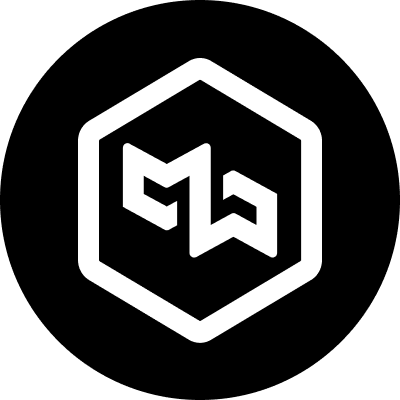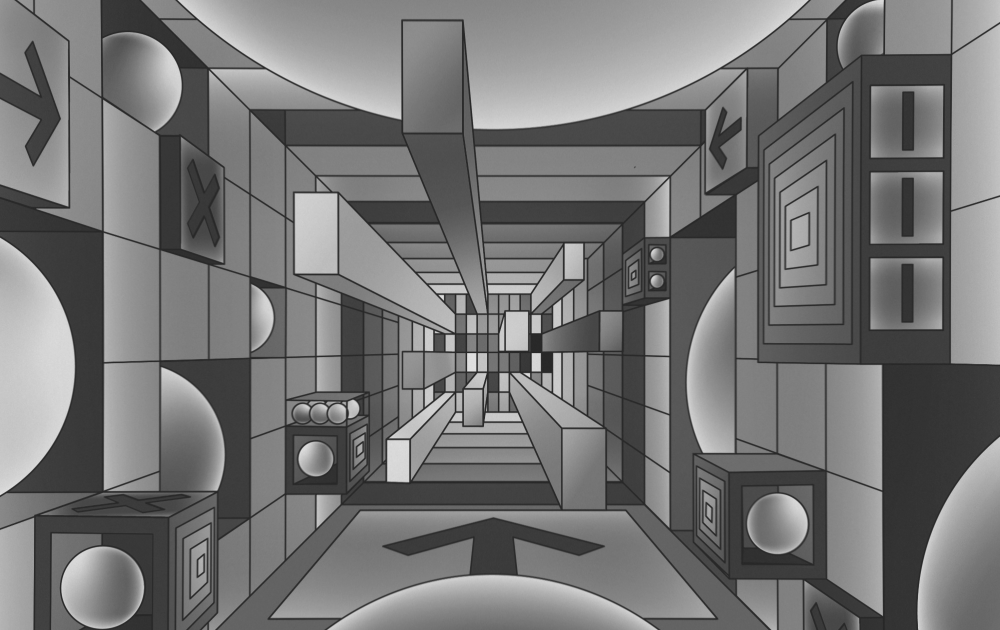The MVP Design Process
In today's competitive world, it's important to follow the MVP design process. This process helps startups face challenges, such as planning, designing, building, and launching their idea into the world. The MVP design process can also help overcome hurdles such as team experience, limited funding, team size, and/or timelines.
An MVP (Minimum Viable Product) design process approach will focus the team's efforts on a common goal.
With the MVP design process, startups can focus on the core functionalities and address user needs with a simple, yet fully-functional and marketable product. It's a strategic way to avoid packing in tons of features that can lead to longer development times and compromise the user experience. By following a clear and efficient MVP design process, you can navigate the product journey from idea to a well-defined product more efficiently with predictable results.
With the importance of the MVP design process in mind, we can dive deeper into the five key phases that will structure the product design process.
“At Midwestern, we see MVP as a mindset. A mindset to building something beautiful and useable without overbuilding for our team’s capacity and our client’s product goals.”
Understand it: Knowing the product better
The "Understand It" phase is the most vital part of the MVP design process. This phase is all about product discovery and laying the foundation for the entire project. This phase is all about gathering information, understanding the business goals, and understanding the users your product wants to serve in the digital world.
The key activities in the “Understand It” phase:
UX Research & Competitive Analysis
It’s always important to gather key information before starting the MVP design process. Gathering key insights about the business including pricing strategy, product offering, and competitive analysis will identify existing solutions that will help the team avoid pitfalls and identify opportunities in the market.
Defining the Problem & Identifying the Users
Clearly defining the problem your product will address is the most important thing you can do. Along with understanding the target user groups and what they’re trying to get done, this will help you laser focus your value propositions and USP’s later on when define the core features of the product.
Defining the Product with a Product Statement
After identifying all the key components to the product strategy, it is always great to write a product statement that explains what your product is and who it’s for. This will give the entire team some unified alignment and clarity around the product and what it needs to do. Think of this as an Elevator pitch, but for the internal team and stakeholders.
The goal of the "Understand It" phase is to achieve clarity and focus. Although it's hard to achieve, the more you understand the problem and your target audience, the better equipped you'll be to move into the "Think it" phase.
Think it: Brainstorming and Shaping the MVP
Now having a good understanding of the users and the problem we're solving, it's time to start thinking of our opportunities and what the product could be in the "Think It" phase. This phase is all about coming up with ideas, defining the product's core functionalities, and laying the groundwork for the look & feel of the product.
The key activities in the “Think It” phase:
Feature Prioritization & building the Product Roadmap
After identifying some key opportunities that your product can take advantage of, prioritize those features using simple methods like the MoSCoW method or more involved methods like the RICE method. The team’s Product Manager will most likely have a preferred method to help build the roadmap with acceptance criteria for the next phase.
Define the Minimum Viable Product (MVP) Scope
Not all features should be included in the MVP. The market research from the "Understand It" phase will help identify & validate the most essential functionalities that address the user’s jobs to be done and their core problems. With this, developing the information architecture (sometimes referred to as a sitemap) for the product can be done to gain alignment from the team and stakeholders.
User Interface (UI) & User Experience (UX) Design
Exploring the way your product looks & feels is a vital part of launching a successful MVP. Even with a basic MVP, a well-designed and well-thought-out Product Design System will help ensure consistency, usability, and scalability as the product introduces new features in future iterations. Having a pre-determined “style”, will accelerate production times and will help prevent design debt as teams have approved design patterns & principles to refer to while designing each of the product’s features.
By the end of the "Think It" phase, there should be a defined MVP scope with a clear vision for your product's core functionalities and design direction. This sets the groundwork for the "Create It" phase, where you'll finally bring your MVP to life.
Create It: Designing the MVP
With a clearly defined MVP scope, design system, and prioritized product roadmap, UI/UX designers will bring the vision to life in the "Create It" phase. This phase is where your MVP goes from idea to design concepts and prototypes that can be validated and tested to ensure the team is building the right thing the right way.
The key activities in the “Create It” phase:
UX Brainstorming
Here’s where the design team will dive deeper into the core functionalities outlined in the "Think It" phase and on the Product Roadmap. Brainstorming and detailing optimal user flows and interaction patterns for each feature will be crucial before getting into designing the feature. This is also a great time for designers to collaborate with the Engineering team and Motion Designers to identify other opportunities or constraints.
Iterative Design Process
The design process is rarely linear. Expect multiple iterations of the feature as designers address the problem with multiple solutions using the established design system. More complex problems require more complex solutions, the goal here is to rely on established design patterns based on industry standards and to keep solutions as simple as possible.
Detailed Design and Specifications
Once the designers are in a good place, UI/UX designers annotate each of their designs for the development team with exact measurements and links to the design system. These detailed mockups, along with comprehensive design specifications, will serve as blueprints for the development teams.
By the end of the "Create It" phase, you should have a polished, well-designed MVP ready for development and testing. This brings you one step closer to launching your product and gathering valuable user feedback to fuel further improvement in the following phases.
Review It: Ensuring the MVP is Ready
The "Create It" phase the design of your MVP into the world, but now it's time to gain some important insights from those on your team to ensure everything is polished and user-friendly. The "Review It" phase is dedicated to scrutinizing the explorations from every angle with peers, the rest of the team, users, and stakeholders. Once designs are ready for review,
Key Activities in the Review It Phase:
Peer Review
Encourage peers including other designers, developers, product managers, and other stakeholders to review the MVP and provide feedback. This diverse perspective helps identify potential technical roadblocks or areas where the design might clash with other in-progress explorations or design patterns.
Regular Design Critiques
Getting the team together for internal design critiques can be fruitful. These structured sessions allow designers to present their work and receive constructive feedback from other members of the team. This collaborative effort helps identify any potential usability issues or areas for improvement before finalizing the design and presenting it to stakeholders.
Stand-up Meetings
Daily stand-up meetings are great way to keep everyone informed about progress, highlight any roadblocks, and address any last-minute concerns before finalization.
Design Lead Review
Design leads are an important part of the review process. They help to ensure the MVP adheres to the established design system, offers a cohesive user experience, and aligns with the initial vision outlined in the "Think It" phase.
Product Owner Review and Approval
The product owner represents the stakeholders of the business. Presenting the explorations in a final review and granting final approval for the MVP. This ensures the product aligns with business goals and user needs before moving into development.
The review process minimizes the risk of launching an MVP that doesn’t meet certain standards set forth by the team. By addressing any potential issues early on, you pave the way for a positive user experience and set the stage for future iterations and improvements based on real-world user feedback. By incorporating feedback from various sources, you guarantee your MVP is well-rounded, user-centric, and ready to go to market.
Improve It: Refining the MVP based on insights
After you've successfully launched your MVP, there might be some features that need improving based on actual user or stakeholder feedback. It’s important to know that in the MVP process, features don’t have to be perfect when they are launched. The important to know this phase exists when the team has the time and funding to improve certain features.
The "Improve It" phase is an ongoing process of monitoring user feedback, analyzing data, and iterating the MVP to improve its value and quality. This ensures your product stays relevant, addresses evolving user needs, and remains competitive in the market.
Key Activities in the Improve It Phase:
Gather User Feedback
Utilize various channels to gather user feedback, such as app store reviews, in-app surveys, and user interviews. Pay close attention to both positive and negative feedback, identifying areas where your MVP excels and areas where it falls short.
User research & testing
This is a great opportunity to find out how much your MVP resonates with real users. The team’s UX researcher can conduct user testing sessions and observe how users interact with the prototype. Their feedback is invaluable in uncovering insights such as usability challenges and user behavior. This helps to ensure the final product delivers a seamless user experience.
Analyze User Data
Don't just rely on individual feedback from users – dive deeper into analyzing user data. Look at metrics like user engagement, feature usage, and conversion rates. This data can reveal hidden insights about user behavior and help pinpoint areas for improvement that would have the most reach and impact on the user base.
Make small but impactful iterations
The "Improve It" phase is all about making incremental improvements that require low effort but significant impact that builds upon your initial MVP. Resist the urge for major overhauls but instead, prioritize small, focused iterations that directly address user pain points and identified issues. Use a framework that identifies problems and opportunities like our Thoughtful Experience framework.
Prioritize Improvements
Use a combination of user insights and data analysis to prioritize improvements. Focus on addressing core usability issues, fixing bugs, and refining features that demonstrate low user engagement. From there, Product Managers and Product Owners can prioritize which features will have the most impact with their improvements.
The "Improve It" phase is all about taking your MVP from a good initial product to a great growing product. By actively incorporating user feedback, you can continuously refine your product and ensure it delivers value to your users. Remember, successful MVPs are never really finished – they will keep evolving with the needs of the users and the vision of the Product team.
The MVP Process: A Continuous Cycle
The five-phase MVP design process framework – Understand It, Think It, Create It, Review It, and Improve It – provides a structured roadmap for bringing the product from idea to launching into the market more efficiently.
With this process in mind, it’s important to remember that the MVP design process is not a destination. It’s a milestone in the journey towards the long-term vision of the product. By prioritizing user needs and focusing on core functionalities, you can plan, design, build, and test a thriving product that resonates with its users and the company’s goals.
Are you looking for design and branding assistance? Let's connect to see how our team of designers can serve you and your product.








.svg)
.svg)
.svg)